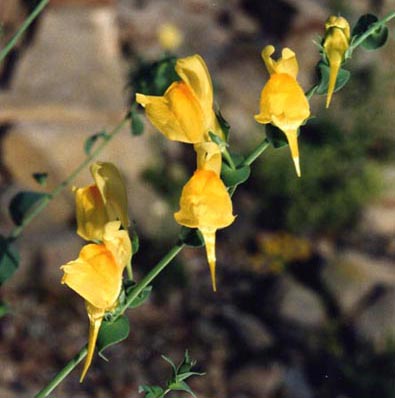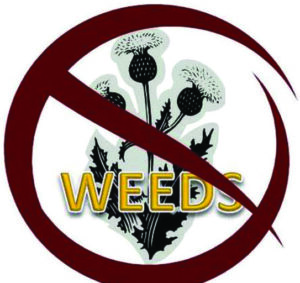
Ornamental to Noxious
By The Blaine Bug Crew
 The noxious weed we will highlight this week was planted in people’s gardens. Once weed managers identified its invasive nature, it was added to the state noxious weeds list. Blaine and surrounding counties have been fighting Dalmatian Toadflax ever since.
The noxious weed we will highlight this week was planted in people’s gardens. Once weed managers identified its invasive nature, it was added to the state noxious weeds list. Blaine and surrounding counties have been fighting Dalmatian Toadflax ever since.
Dalmatian toadflax is a perennial that grows up to four feet tall. Its waxy green leaves are heart-shaped, one to three inches long, and clasp to the stem. The flowers are one inch long, yellow, often tinged with orange or red, and similar in shape to a snapdragon. Plants flower from midsummer to fall. Seeds are produced in a half-inch pod and are irregularly wing-angled. A single plant may produce up to 500,000 seeds in a season which may remain viable in the soil for up to 10 years.
This plant also reproduces vegetatively by stems that develop from adventitious buds on primary and creeping lateral roots. It is usually associated with sparsely vegetated areas, such as roadsides, abandoned or unmanaged land, gravel pits, and disturbed pastures and rangelands. It is found in most counties in Idaho. This invasive plant is reportedly toxic to livestock. Luckily we have a bug just as toxic to Dalmatian toadflax.
Adult Mecinus Janithformus are small, somewhat elongated bluish-black weevils which emerge from the previous year’s infested Dalmatian toadflax stems in April-May. Adult Mecinus Janithformus feed on toadflax stems that are at least 0.04 inches in diameter and feed on leaves and stems from June to mid-July before mating and laying eggs inside new shoots. The eggs typically hatch in 6 to 7 days. Larvae tunnel within the toadflax stem for 23 to 34 days, moving no more than 1.2 inches from where the egg was laid. Pupation occurs within the stem. Adult feeding on stems and leaves has a limited impact on the plant. Larval mining impacts the plants by causing premature wilting of shoots and suppressing flower formation. Mecinus Janithformus overwinter as adults inside their pupation chamber. The effects of the weevil on the plant are reportedly enhanced under drought stress.
We hope this article helps you more easily identify Dalmatian toadflax and its noxious characteristics. It is up to all of us to help keep this invasive species at bay. With our eyes on public lands, we can assist the Blaine County Weed Department to identify the areas of concern and new infestations. If you have concerns about Dalmatian toadflax in your area, please call Kay Draper at (208) 727-7221.


